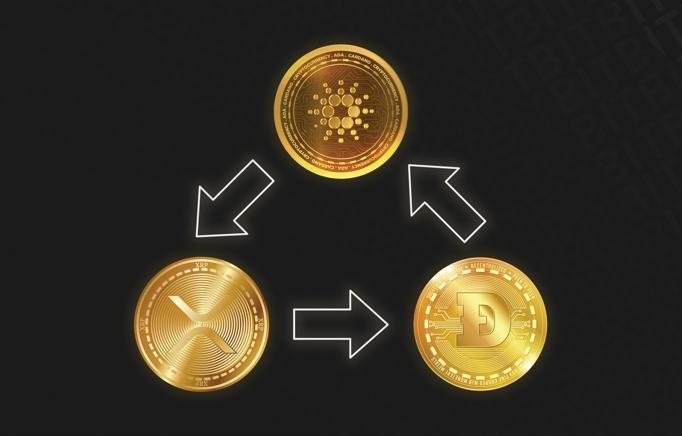What is Arbitrage Trading?
العملات المشفرة للمحترفين
مقالات أخرى
Arbitrage. Fancy word, right? It’s originally Latin, and mix that with late Middle English and some French dressing, you have arbitrage. The definition evolved from the exercise of judgement to a widely-used economic term which encapsulates a very profitable strategy.
In essence, arbitrage trading is a strategy where traders buy a security in a market or exchange, and sell it simultaneously on another market for a higher price. In the world of crypto, it is when traders buy a cryptocurrency on one exchange and then rapidly sell it on another.
A legitimate way to capture short-lived profits, arbitrage trading has been adopted by hedge funds, financial market investors and more recently, crypto traders. Since cryptocurrencies are traded on hundreds of different exchanges, price discrepancies arise.
How Does Arbitrage Trading Work?
To engage in the phenomenal trading strategy of arbitrage, you need to do some research. Some crypto exchanges are larger than others, which means that trading volume differs from one exchange to another. With that being said, the tug-of-war between supply and demand, or more accurately, the balancing scale, is likely to be different on every exchange, given the number of active market players.
Another factor causing price disparities would be the centralization and decentralization of crypto exchange platforms. Centralized and decentralized exchanges price assets differently. The former relies on recent bid-ask matched orders on their proprietary order book, while the latter adopts an automated market maker mechanism which relies on liquidity pools to determine the price of listed assets.
There are three major types of arbitrage trading strategies:
Cross-exchange Arbitrage
The basic form of arbitrage trading is cross-exchange arbitrage, which involves buying crypto on one exchange and selling it on another exchange. It is the bread & butter of arbitrage.
Example:
Bitcoin price on Exchange A = $21,000
Bitcoin price on Exchange B = $21,200
Here, one could buy Bitcoin on Exchange A and sell it on Exchange B to gain quick & small profits.
Spatial Arbitrage
This tactic involves trading the same cryptocurrency across two distinct exchange platforms located in different regions. For example, one could buy Bitcoin on an American exchange and sell it on a Japanese one. However, the issue of transfer time and trading costs may pose some risk which can diminish the utility of this strategy.
Example:
Ethereum price on Exchange A = $1,550
Ethereum price on Exchange B = $1,650
Here, one could buy Ethereum on Exchange A and sell it on Exchange B to gain lucrative profits.
Triangular Arbitrage

This one’s for the fanatics. Triangular arbitrage is the process of buying a cryptocurrency, converting it to another cryptocurrency which is deemed overvalued compared to the bought crypto asset, and then selling what has been converted. The cycle of triangular arbitrage takes advantage of several discrepancies, and can be quite the moneymaker.
Example:
One could purchase XRP coins, convert them to Dogecoin on the same exchange, trade Dogecoin for Cardano, and then finally end the loop by converting Cardano back to XRP. The circle is complete, and the profits are usually worth the effort.
Advantages of Arbitrage Trading
It’s no surprise that arbitrage trading is a very common way to engage in online trading of assets and securities. Many crypto investors and traders adopt arbitrage trading as part of their strategy, which aims to capture the inefficiencies surrounding crypto asset pricing across different exchanges.
Among the benefits of arbitrage trading are:
1- Very large number of cryptocurrency exchanges, which traders can closely track using software to uncover the largest variance in crypto prices.
2- Recurrent opportunities for arbitrage consistently arise, as the crypto market is swamped with human traders. With more humans come more human errors and price discrepancies & volatility which are driven by emotion.
3- Short-term, quick profits result from appropriate use of arbitrage trading, and it can be a rewarding way to monetize your research on cryptocurrency exchange prices.
Limitations of Arbitrage Trading
When it comes to arbitrage, it’s not all sunshine and rainbows. While effective, arbitrage trading is associated with several drawbacks and risks which can be costly with regards to time or even capital:
1- You must have an account on every crypto exchange you engage with to buy or sell on them, so one should make sure to be fully registered and also gone through the KYC procedure(s) when dealing with centralized exchanges.
2- Dispersing funds on different exchanges is necessary to be able to act quick whenever an arbitrage opportunity arises, which can be a hassle on its own since traders are dealing with more crypto exchanges on a regular basis.
3- Transfer & trading fees can be costly and hence can make arbitrage trading an obsolete tactic, since profits will be eaten up by exchanges which charge higher trading fees.
Summary
Arbitrage trading dates back many years, and it remains to be a popular strategy among traders. Investors & traders can take advantage of the varying crypto prices on the many different crypto exchanges, capitalizing on human-induced inefficiencies to generate quick profits.
Yet, arbitrage trading, like any other worthy endeavor, comes with risks such as high transfer & trading fees which can slash profits. Before engaging in arbitrage trading, be sure to understand how it works, why it can be useful and its associated drawbacks to better comprehend the mechanisms behind this phenomenon and ultimately, empower your trading initiatives.


